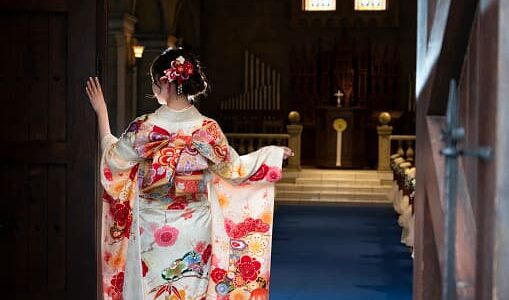The evolution of traditional Japanese music is a fascinating window into Japanese society. Many various historical and cultural influences have shaped Japanese music from its earliest manifestations in ancient and mediaeval times to the present day. This article traces the historical evolution of traditional Japanese music, focusing on the genre’s defining characteristics, its most prominent artists, and its significance in Japan and worldwide.
Ancient and Medieval Periods (up to the 16th century)
Traditional Japanese music has been around since ancient times and the Middle Ages. Gagaku is one of the oldest kinds of Japanese music. It is the music of the royal court. It was brought to Japan during the Nara period (710–794). It came from China and Korea. Gagaku has a slow, steady beat and is played by a large group of instruments, such as the sho, the biwa, and the koto.
During this time, shomyo, which is a type of Buddhist singing, was an important part of traditional Japanese music. Shomyo was played by a choir of monks during religious rituals. Mostly wind and string instruments, like the shakuhachi and the biwa, were used during this time. Kibi no Makibi, who is credited with bringing gagaku to Japan, and Kibi no Tomonori, who is known for his contributions to Japanese poetry and music, are two famous composers and singers from this time.
Edo Period (17th-19th centuries)
The Edo period saw the rise of popular forms of music, such as kabuki and bunraku theatre music, and joruri, puppet theatre music. These forms of music were influenced by popular culture and were performed by travelling actors and musicians. One of the most popular instruments during this time was the shamisen, a three-stringed instrument that was used in both traditional and popular music.
Some of the famous composers and musicians of the Edo period include Yatsuhashi Kengyo, who is known for his contributions to the koto repertoire, and Takemoto Gidayu, who is credited with creating the musical style used in bunraku puppet theatre.
Modern Period (late 19th century to present)
During the Meiji era, which was in the late 1800s, Western music had an effect on traditional Japanese music. When Western instruments and styles were brought to Japan, new kinds of music like enka, which is a famous type of Japanese ballad music, began to appear.
In the 20th century, new instruments and styles were added to traditional Japanese music, which meant that it kept changing. Hikaru Sawai, who is known for his koto compositions, and Yumi Kurosawa, who is a virtuoso on the 20-stringed koto, are two modern musicians and songwriters who keep traditional Japanese music alive.
Music of the Samurai: The Role of Music during the Medieval Period
Music was significant in the life of the samurai during the Middle Ages. Samurai warriors received training in both martial arts and the art of playing traditional Japanese instruments like the biwa and shakuhachi. The shakuhachi was employed for reflection and meditation, whereas the biwa was frequently used to accompany epic tales of battle.
Global Impact of Traditional Japanese Music
Traditional Japanese music has been heard all over the world, and UNESCO has named it an Intangible Cultural Heritage of Humanity. A lot of modern composers and musicians, like John Cage and Lou Harrison, have been inspired by traditional Japanese music.
Future of Traditional Japanese Music: Trends and Innovations
Traditional Japanese music is always changing and getting new ideas added to it. One of the trends is the use of modern technology in making and playing music. Another is the pairing of traditional Japanese artists with musicians from other countries, especially in jazz and world music.
Traditional Japanese music has changed through the creation of new styles like “neo-folk” and “neo-traditional” music, which have parts of both traditional and modern music. There are also programmes to teach and spread the word about traditional Japanese music and keep it alive.

Conclusion
Finally, traditional Japanese music is a rich and dynamic aspect of Japan’s cultural legacy. From its earliest phases in the ancient and mediaeval periods to the present day, Japanese music has been impacted by a wide range of historical and cultural factors. Traditional Japanese music has long had an international impact, in addition to being an intrinsic part of Japanese culture.
As we learn more about the significance and evolution of traditional Japanese music, we can appreciate its uniqueness and longevity. We hope that more people would look at this unique cultural practise.



